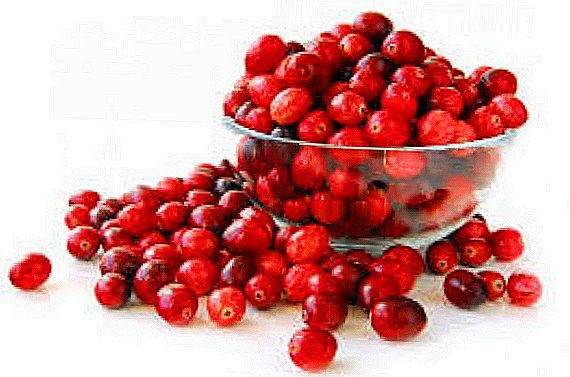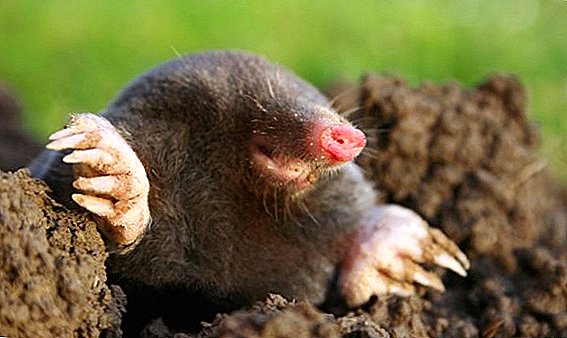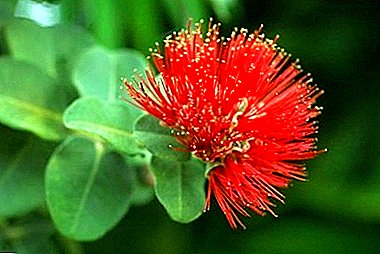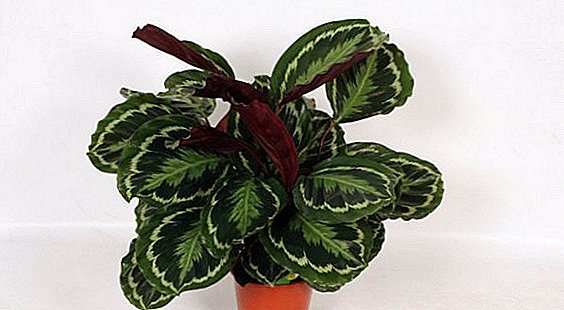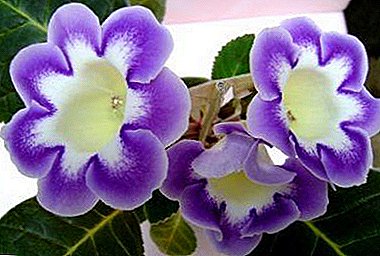
Compact rosette of velvety green leaves and 10-30 bright colors - these are distinctive features of gloxinia. The houseplant is originally from South America. The content requires strict adherence to conditions. Deviations from the norms of irrigation, feeding, temperature and other recommendations leads to problems with buds.
In the article you can find out why the buds of the plant do not open or dry before they are dissolved, as well as about other problems and ways to eliminate them. How to create the necessary conditions for the magnificent flowering of gloxinia?
Structure and features
Gloxinia flowering period begins in March and lasts for 2-3 months. After the first wave, you can cut off the top of the outlet, stimulating re-flowering. The buds are single, each growing on a separate flower stalk. The halo shape is bell-shaped, tubular.
Coloring of various types:
- monophonic - violet, pink, white, red;
- calico - the main background covers the pattern of small dots;
- rim of contrasting color - white on a red background, crimson on white;
- the neck of the flower is more saturated or light.
Large flowers of terry varieties with a diameter of up to 12 cm tilt the peduncle. This is a normal condition.
The flowers are velvety, the edges of the petals are rounded with a wavy or corrugated edge. In the corolla there are 4 stamens and pistil, an anther annular.
Causes and Solutions to Common Problems
When agrotechnics violate the cultivation of gloxinia, problems with buds. Quick search for the causes and elimination of errors will help restore the health of the plant. You can find out why gloxinia does not bloom and how to make it release buds here.
Why don't they bloom?
 The first step is to examine the flower. The presence of spots on the leaves indicates a fungal disease (read about what are diseases of the leaves of gloxinia and how they are treated, read in our material). It is treated with fungicides.
The first step is to examine the flower. The presence of spots on the leaves indicates a fungal disease (read about what are diseases of the leaves of gloxinia and how they are treated, read in our material). It is treated with fungicides.
Delayed blooming causes exposure to pests - thrips or spider mites (about what pests and infections can destroy gloxinia, as well as methods of their treatment, can be found here). Insects suck the sap of the plant, slowing its development.
Having noticed moving light points or a spider web on the underside of the leaves, gloxinia is isolated. Treatment of insecticides "Aktara", "Fitoverm" will relieve pests.
Other sources of problem:
- Condensatearising from a sharp change in temperature in the room. Due to moisture petals stick together. Help the flower to open, using a brush.
- Lack of light. A characteristic symptom - the leaves are pulled up. You must move the pot to another window sill or turn on the lamp.
- Cold or heat. The optimum temperature of the content is 18-20 °, deviation from it provokes a slowdown of the vegetative processes.
- Dry air. The lack of moisture in the air can be compensated by spraying water near the plant (without falling on the leaves). Another option is to install a pallet with wet pebbles or moss.
- Lack of strength. With a lack of nutrients, gloxinia dries individual buds. The solution is transplanting gloxinia into fresh soil, adding feed.
Tip! A pot with gloxinia should not stand in a draft, this is a common cause of flowering problems.
Informational video about why gloxinia buds do not bloom:
Empty
Periodically, after the opening of the sepals, a green pea turns out to be in place of the bud. Over time, the peduncle darkens and disappears.
There are several possible causes of barren flowers:
- storing the tuber in a cold place;
- lack of nutrients in the soil or high acidity of the soil;
- young or old tuber.
Recommended transplant in a new nutrient soil. Netherflower is cut, after a while there will be new flower stalks. Stimulate growth will help solution "Epin."
Black petals
The buds turn black and dry in poor soil, with low air humidity, due to soil flooding. Possible option incorrectly selected acidity of the soil.
- Process the soil with one of their fungicides ("Fitosporin", "Fundazol").
- Increase the humidity in the room - install a humidifier, a container with water.
- Trim dried parts of the plant.
- Transplant a flower in a new ground. To process growth stimulant "Epin". The optimum acidity of the soil is 6-6.5 pH.
- Protect the flower from direct sunlight, provoking burns buds.
Dry up
 Why do buds dry up? The main reason for drying is the wrong lighting. The lack of light and the direct rays of the sun are equally destructive for a plant. Among other reasons:
Why do buds dry up? The main reason for drying is the wrong lighting. The lack of light and the direct rays of the sun are equally destructive for a plant. Among other reasons:
- dry, stagnant air in the room;
- drafts;
- low or high temperature;
- depleted soil;
- lack of moisture;
- spider mite
Each problem has its own solution.:
- To increase the level of humidity in the apartment or directly next to the gloxinia.
- Keep the air fresh, but avoid drafts.
- Adjust the temperature to optimal performance (18-20 °).
- Feed supplemental mineral fertilizer. Repeat the procedure every week.
- Water the plant immediately after drying the top layer of the earth.
- Spider mite is one of the causes of budding. Symptoms of his presence - punctures on the leaves. Often the pest is found on the web on the leaves. It will help destroy the funds "Aktellik", "Fitoverm." It is desirable to carry out 2-3 treatments.
Video about the causes of drying gloxinia buds:
Rotting
Rotting buds turn brown, soft and wet. The problem occurs when using fertilizers with a high nitrogen content. Also rot appears after waterlogging. Infection with a virus and a fungus cannot be ruled out. Actions to save the plant:
- Removal of rotten parts of gloxinia.
- Complex treatment of tuber with Fitosporin, Fundazol, and Maxim preparations.
- Checking the soil moisture, refusing to water until the substrate dries out.
- Find out the acidity of the soil, if it is high, replace the soil.
- Choose fertilizers with a high content of phosphorus and potassium.
Preventive measures
- Top dressing plants phosphate-potash fertilizers.
- Compliance with agronomic conditions of detention: moderate watering, complex feeding, good lighting (how to water and feed the plant?).
- Transplant a tuber after a dormant period into a fresh substrate.
- Use drugs "Epin" or "Zircon" to stimulate the development and enhancement of immunity.
Conditions for abundant flowering
 To achieve long flowering with large, brightly colored buds will allow proper care when growing gloxinia.
To achieve long flowering with large, brightly colored buds will allow proper care when growing gloxinia.
- During the period of budding provide a large amount of sunlight for 12-14 hours. Avoid exposure to direct sunlight. With a lack of natural lighting connected lamps. The pots are placed at a distance from each other, with crowded flowering weak.
- The second most important condition - loose nutrient soil for room gloxinia. Suitable ready-made universal mixture based on peat with the addition of vermiculite. Making feedings every week. Recommended drug "Kemira Lux".
- Watering regularly, but without stagnant moisture. Water settled at room temperature. The upper watering is carried out on the edge of the pot, avoiding dropping leaves on the leaves (you can learn about how to pick a pot for gloxinia, as well as about the features in planting and watering the plant).
After the end of the vegetative period gloxinia provide conditions for winter holidays (what to do after gloxinia has faded, read here, and you can learn about the features of its wintering here). Watering is reduced, the amount of light decreases, additional dressings are removed. The plant is cut off all the dried leaves. The tuber in the pot is sent to a dark cool place, watering rare. With proper care, gloxinia blooms for 5-6 months.


